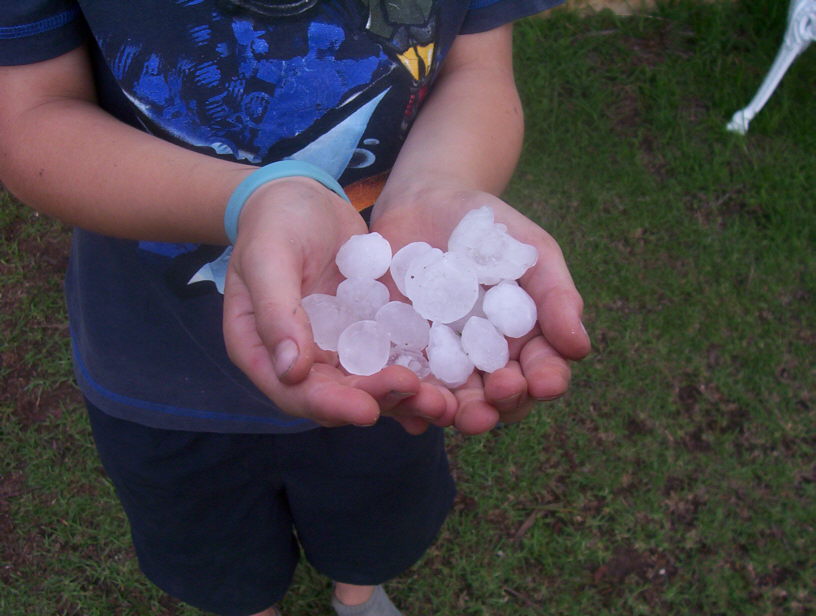
Wild Windellama
by Paul Alessi
April 2007
Wild Storms
The big dry came to an end for
us with a number of intense storms, two of these
came with large hail stones and torrential rain yet only a few
kilometres away at Windellama Hall
it remained dry, maybe it's our location close to the Shoalhaven
River that gives us these
gully washers, anyway we are grateful for the full tanks and dams
but cleaning out the thick layer
of silt in one of our sheds that was flooded is still to be
completed.
The most dramatic of these
storms was on the 27th of February with the storm coming in
from the South then heading northwards through Bungonia, this
storm front joined with another
becoming a cyclonic type of storm with an eye in the middle as
can be seen from the radar image, it brought the
largest hail and heaviest rain we have ever seen here before.
Special thanks to Dave Edworthy for the radar image.


Windmill Grass (Chloris truncata)
The late summer rain has brought
on a profusion of seed heads on many native grasses
including Windmill Grass, like most native grasses we walk right
over the top of them without realising
they are there, it's often not until they set seed that we notice
them, although there is usually a bit
of Windmill Grass about each Autumn, it looks like being a great
season for this species that is
more common than the experts would have us believe.
Windmill Grass is regarded as an
Australian native grass yet also occurs in Europe and America as
well,
it is closely related to the much taller African species Chloris
guyana (Rhodes Grass) that you see along the
freeway from about Mittagong northwards. Windmill Grass prefers
colder climates and is common
from about Marulan through to Albury at least that I have seen,
it is also a reasonable feed grass for stock.
The windmill tops eventually
break off when they are ripe and blow in the wind spreading their
very light seeds to new places. Windmill grass has been trialed
successfully as a lawn for dry conditions.

Copyright Paul Alessi 2007